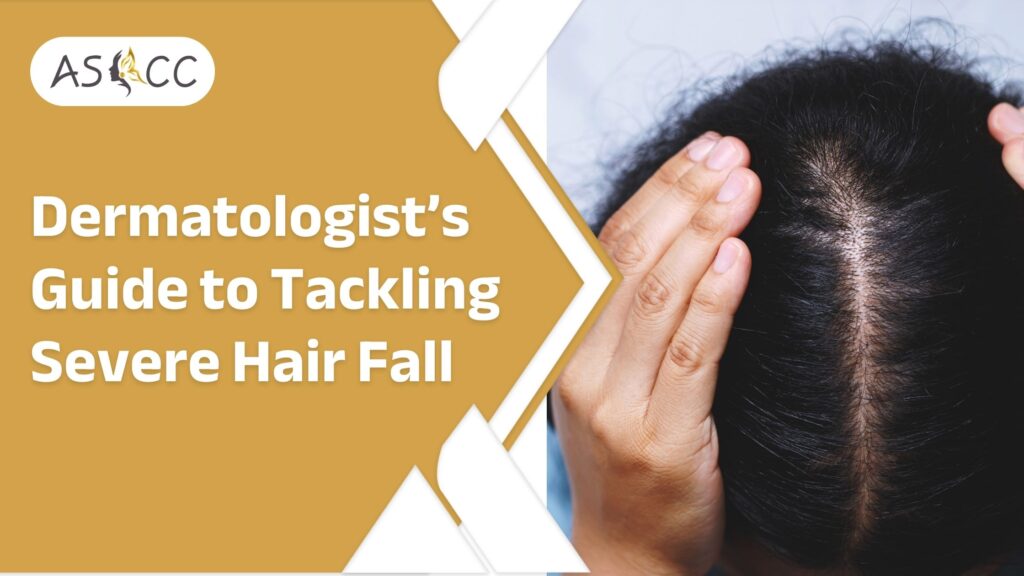Introduction: Why Hair Fall Feels Like an Unending Crisis
When your hair starts to get out into a lump, it’s not just your skull that is in trouble – your confidence also takes a hit. The place you notice in the mirror, or the way the ponytail begins to feel flopped and small, is a sinking feeling that simply does not leave. Tackling the problem takes more than good shampoo; it takes knowing what’s happening below the surface. That’s where the Best Hair Fall Doctor in Jaipur enters the picture. They translate the science into choices that work for you. Ready to get your hair and your peace of mind back? Here’s the step-by-step you need.
What’s the Black-and-White Line for “Severe” Hair Fall?
Wondering if the strands on your shirt are a red flag or just a Tuesday? Up to 100 fallen strands a day is the baseline standard, no sweat. But if you see:
- That tell-tale widening on your crown,
- Your centre part is growing broader overnight, or
- Entire sections coming out in a single wash or brush,
Then the “just monitor” phase is over. It’s showtime for real intervention.
Why Does Severe Hair Fall Happen?
Shedding strands isn’t always just shampoo choices, weak diets, or bad luck in the gene pool. More often, it’s a blend of trouble spots. These are the big ones dermatologists check first:
1. Genetics and Family History
When one or both parents lose hair, the pattern often likes to stick around. We call the family escort androgenetic alopecia.
2. Hormonal imbalance
When a thyroid gland goes to the hive, when the ovary plays tricks in PCOS, or when the hormone goes and sinks during pregnancy, stable hair growth for a magic.
3. Nutrition deficiencies
Putting a dip under the required iron, vitamin D, or protein means your threads lack the strength to hang. Hair needs good food as your body does.
4. Stress and Lifestyle
Ever watched your hair tumble on the floor just after finals or a breakup? Stress can flip a switch called telogen effluvium, and suddenly, roots let go.
5. Medical Conditions and Medications
Autoimmune tricks, a rogue scalp infection, or scripts like chemo drugs can kick hair out the door all at once.
How Dermatologists Diagnose Severe Hair Fall
Instead of memes and message boards, dermatologists take the long road:
They’ll scan your scalp with a tiny camera called a dermatoscope,
They’ll draw blood to check thyroid, iron, and vitamin numbers,
They’ll chart your plate, stress chart, and doctor visits.
This stitched approach respects your unique position instead of offering normal reforms that may miss the brand.
Dermatologist-Approved Strategies for Heavy Shedding
Ready for some actionable steps? Here’s what your dermatologist might suggest:
1. Medications
Minoxidil (current): A daily water-based or foam solution that increases the blood flow of the hair roots.
Finasteride (male): A daily pill that reduces a hormone attached to thin strands.
2. Grants
If blood tests show low levels, the document may suggest iron, biotin, zinc or vitamin D to help thicken the threads.
3. PRP (platelet-rich plasma) therapy
A rapid in-office blood drawing, then removed using a centrifuge, which is later injected into a thinning place for kick-start growth.
4. Laser therapy
Handheld or CAP devices provide a lot of red light radiation that increases scalp circulation and arouses inactive follicles.
5. Hair Transplantation
When the follicles have been extracted at a point without return, the last step is often to transfer a healthy graft to the thin area from the back of the head.
Lifestyle Tweaks That Make a Difference
Remedies work best when the rest of your routine aligns:
* Choose protein sources such as eggs, nuts, and fish in each meal.
* Manage tension with yoga, meditation, or 20 minutes of trips.
* Wash with sulfate-free shampoos that are simple on the skull.
* Cut the blow-dryers, curling iron, and bleach.
What You Shouldn’t Do
Please don’t throw your money at miracle oils or those DIY hacks trendy influencers pitch on Instagram. They either don’t work for everyone or can irritate your scalp, making things worse. A quick chat with a professional before trying anything at all is a smarter step.
When Should You See a Dermatologist Right Now?
If you see:
Random bald spots,
A scalp that won’t stop itching or peeling,
Excess shedding after being ill,
don’t wait. Grab that appointment. Catching the problem early gives your hair a real shot at bouncing back before follicles quit for good.
Final Thoughts
Watching your hair thin is tough on your spirit, but the encouraging part is, you can turn it around. Avoid the temptation to diagnose yourself or wait for it to fix itself. With proper advice from the skin doctor in Jaipur, your hair can grow back, and so can your self-assurance.
FAQs
- Can hair grow back after bad shedding?
Yep! With the right treatment and care, many people see regrowth, especially if they start quickly and know what’s causing the loss.
- Is just oiling going to fix the fall?
Not a chance. A good oil can soothe your scalp, but can’t touch the hormonal or nutrient issues behind hair loss.
- When will I notice the treatment working?
You’re looking at a wait of about 3 to 6 months before you spot real changes, so hang in there.
- Stress does have the ability to trigger
hair loss by pushing follicles into a temporary shedding phase, but the silver lining is that it tends to be reversible once the stress is managed.
- Hair transplants can be considered a long-term solution,
As the grafts come from zones that are genetically resistant to thinning, they should keep growing for years to come.


